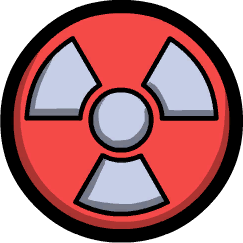No edit summary Tag: Visual edit |
(spelling correction) Tag: Visual edit |
||
| Line 30: | Line 30: | ||
Alternatively, the gas can be sucked away with a [[Gas Pump]]; using an [[Atmo Sensor]] to automate this is recommended if the Oil Well is sealed in a pocket with [[Tiles]] and [[Mechanized Airlock]]s. The release of the gas will build up air pressure, thus triggering the pump to draw away the gas before they overheat things too much. |
Alternatively, the gas can be sucked away with a [[Gas Pump]]; using an [[Atmo Sensor]] to automate this is recommended if the Oil Well is sealed in a pocket with [[Tiles]] and [[Mechanized Airlock]]s. The release of the gas will build up air pressure, thus triggering the pump to draw away the gas before they overheat things too much. |
||
| − | Note : if you plan to fuel [[Natural Gas Generator]]<nowiki/>s with Natural Gas produced by Oil Wells, remember that those generators will release [[Carbon Dioxide |
+ | Note : if you plan to fuel [[Natural Gas Generator]]<nowiki/>s with Natural Gas produced by Oil Wells, remember that those generators will release [[Carbon Dioxide]] at 110+ °C and [[Polluted Water]] at 40+ °C, and that Natural Gas produced by Oil Wells is around 300 °C. That means that if the Natural Gas produced by the wells is not cooled under 122,35 °C (vaporization point of Polluted Water +3 °C) before being sent into the generators, the outputed polluted water will immediately vaporize and turn itself into [[Steam]] (vaporization of Polluted Water also produces [[Dirt]] (1 % of the vaporized amout), but not if the amout of Dirt wich should be produced is under 1 g, and 67.5 / 100 = 0.675 g < 1 g, so there won't be any Dirt produced here), and the generator will take overheating damage if not built with overheating raising material. You can easily cool down Natural Gas released by Oil Wells under 95 °C by making it exchange its heat with Crude Oil produced by the wells (wich is emitted at 90+ °C). |
| + | |||
== Water Recovery == |
== Water Recovery == |
||
Revision as of 15:34, 26 June 2022
 |
This article has not been revised for the current version (U51-600112). It was last updated for LU-356355. It may contain inaccuracies. |
Oil Well can be built atop an Oil Reservoir. It produces Crude Oil when supplied with water, however, water pumped into an oil reservoir cannot be recovered. Produced oil is at 90 °C, or higher if the input water was above 90 °C.
Oil Well also generates Natural Gas at a rate of 20 kg per cycle (33.3 g/s) and stores up to 80 kg of it (100% back-pressure). The gas is produced at temperatures close to 250 °C and adds to the building's heat footprint. Both outputs are dumped into the environment at the bottom cells, gas at the second from the left, oil at the rightmost cell. It is a good idea to put Tempshift Plates on them.
Releasing Backpressure
When its internal pressure is too high, Oil Well requires Duplicant operation to release Natural Gas into the environment. The gas is released at high pressure and temperatures, so the operator should wear an exosuit to avoid getting scalded and stressed. It also pauses oil extraction and can turn water inside Oil Well into Steam which contaminates the gas output if not performed fast enough. Since Oil Well does not mind being submerged, it is beneficial to keep a 1-2 cells-high layer of oil, so it can soak up the heat and prevent evaporation of water.
Alternatively, the gas can be sucked away with a Gas Pump; using an Atmo Sensor to automate this is recommended if the Oil Well is sealed in a pocket with Tiles and Mechanized Airlocks. The release of the gas will build up air pressure, thus triggering the pump to draw away the gas before they overheat things too much.
Note : if you plan to fuel Natural Gas Generators with Natural Gas produced by Oil Wells, remember that those generators will release Carbon Dioxide at 110+ °C and Polluted Water at 40+ °C, and that Natural Gas produced by Oil Wells is around 300 °C. That means that if the Natural Gas produced by the wells is not cooled under 122,35 °C (vaporization point of Polluted Water +3 °C) before being sent into the generators, the outputed polluted water will immediately vaporize and turn itself into Steam (vaporization of Polluted Water also produces Dirt (1 % of the vaporized amout), but not if the amout of Dirt wich should be produced is under 1 g, and 67.5 / 100 = 0.675 g < 1 g, so there won't be any Dirt produced here), and the generator will take overheating damage if not built with overheating raising material. You can easily cool down Natural Gas released by Oil Wells under 95 °C by making it exchange its heat with Crude Oil produced by the wells (wich is emitted at 90+ °C).
Water Recovery
Usage of oil can indirectly lead to production of water through several methods. Using Oil Refinery produces Petroleum and Natural Gas from oil, which then can be used in Petroleum Generator and Natural Gas Generator to produce Polluted Water. The Refinery converts only 50% of the mass of the oil into petroleum, and 9% to natural gas, and the generators convert 37.5% of the mass of petroleum to polluted water (overall producing 62.5% the mass of the original water) and 75% of the mass of natural gas to water (producing 22.5% the mass of the original water) respectively. Even including the natural gas emitted by the oil well (which yields 2.25% the mass of the original water), this means a total loss of 12.75% of the water entering the oil well.
However, if the Carbon Dioxide output of the above system is used to ranch Slicksters, it increases the oil in the system by roughly 3.33% overall and reduces the overall water loss to approximately 7%. With molten slicksters, the amount of petroleum in the system can be increased by roughly 14.28%, reducing the loss to roughly 3.82%.
Oil can be directly converted to petroleum without loss of mass by heating it to 400°C. This allows for a net increase in polluted water production. Using this method, Petroleum Generators will produce 125% as much polluted water as the water fed to the oil well (with an extra 2.25% from natural gas generators still). However, heat-producing machines can only withstand these heats if built with space materials, so before producing rockets, this rate of production can only be achieved using a natural heat source like magma or a volcano, or using a Metal Refinery.
An even more advanced method for maximizing water and energy efficiency is the conversion of oil into natural gas at 67% yield via the Sour Gas - Methane pathway. Oil is heated past 400°C where it turns into petroleum, then to 539°C where it turns into sour gas. The sour gas is then cooled below -162°C to turn it into 67% methane and 33% sulfur. The methane is then re-heated above -161°C, turning into natural gas. Burning the natural gas yields 167% as much polluted water as the water fed to the oil well. If efficiently laid out, it also produces significantly more energy than a petroleum based system as the energy density of natural gas (8.89 J/g) is significantly higher than that of petroleum (1 J/g).















